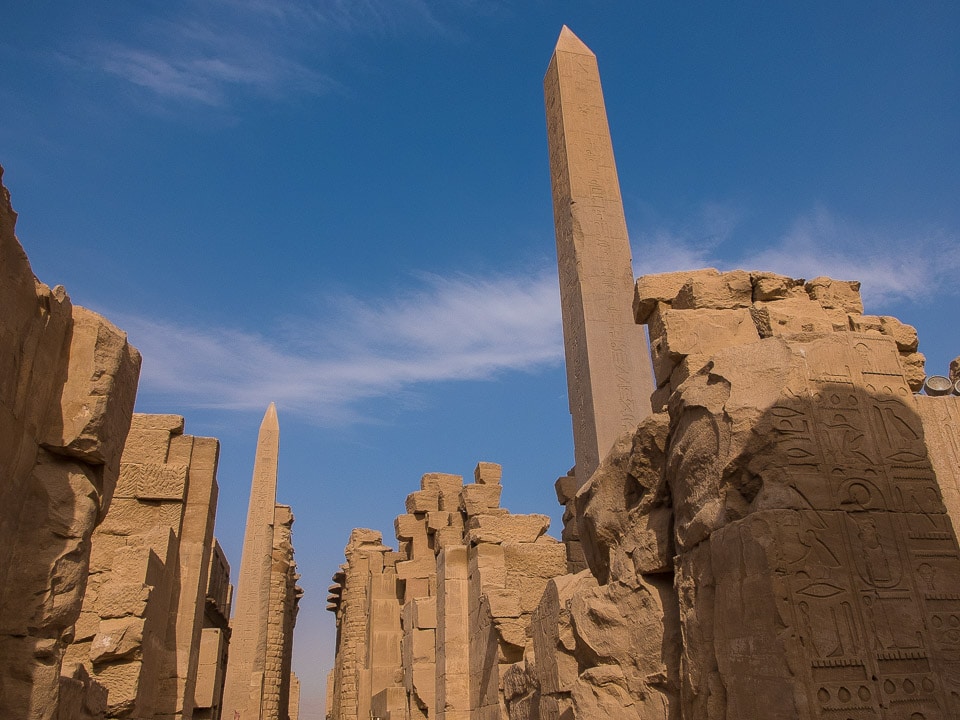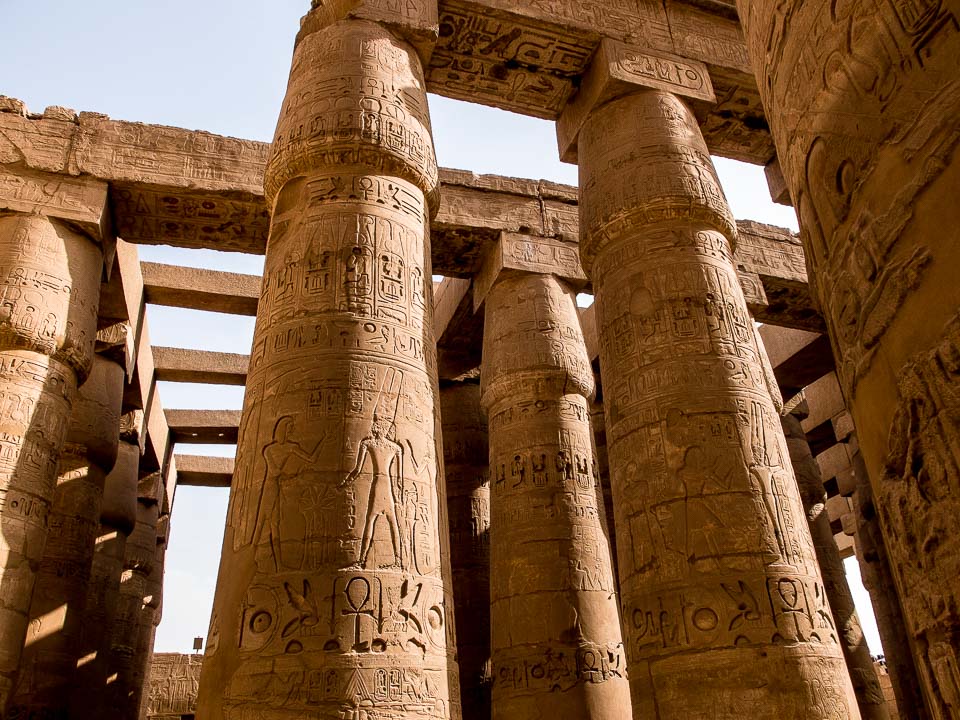
One of the best things about the Egyptian ruins that line the Nile is that most of them were only recently excavated. The famous Nile floods had buried them in mud, and the famous Sahara winds had cooperated to bury them in sand. Consequently, the lower parts that were covered were very well preserved–except for the coloring of the carvings, which was pretty much washed away in most places.
The Temple of Karnak, near Luxor, is the second largest religious complex in the world, after Angkor Wat in Cambodia. It was built over a period of approxiately 1300 years, and so shows a huge diversity of statues, columns and carvings. Most of the great Egyptian pharoahs, including Ramses II and Hathepsut had a hand in the building of Karnak.

The other thing that impresses about Karnak is its vertical size. The columns which make up the main temple are 23 meters (75 feet) tall, beating any other columns we've seen by at least six meters.
Also, unlike some other temples, Karnak's main hall was roofed. Unfortunately, the earthquakes of the last three and a half millenia have brought down the roof. But, as you can see, the trusses and small bits of ceiling that remain show off some of the colorful painting that once covered all the columns and walls.
You can click the link above, or use this widget below to start the process of getting a visa for any country.
Up Your Travel Skills
Looking to book your next trip? Use these resources that are tried and tested by us. First, to get our best travel tips, sign up for our email newsletter. Then, be sure to start your reading with our Resources Page where we highlight all the great travel companies and products that we trust. Travel Accessories: Check out our list of all the accessories we carry to make getting there and being there a lot easier. Credit Cards: See our detailed post on how to choose the right travel rewards credit card for you. Flights: Start finding the very best flight deals by subscribing to Thrifty Traveler. Book your Hotel: Find the best prices on hotels with Booking.com. See all of the gear and books we like in one place on our Amazon shop.Got a comment on this post? Join the conversation on Facebook, Instagram, or Threads and share your thoughts!


Comments are closed.